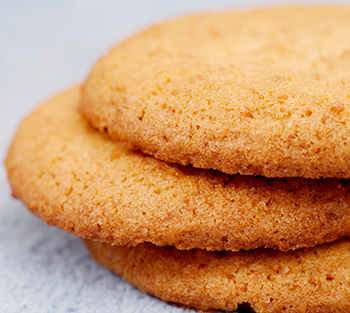Butter-free baking
This article was originally published in December 2014
Butter is nearly always the fat of choice for holiday baking. But that doesn’t mean it’s the only choice — in fact, it’s easier to substitute than many other ingredients when you try to adjust a recipe on the fly.

A fundamental difference between types of fat is whether they are solid or liquid at room temperature. Using that as a frame of reference, shortening, margarine and coconut oil are safe bets to substitute when a recipe calls for cold or room temperature butter. These fats hold air bubbles and can create fluffy textures or flaky crusts. Because of their different moisture content and flavor, blending two of them at a 50/50 ratio can give excellent results. Whipped spreads are technically solid, but their excess water makes them unsuitable for baking.
When a recipe calls for melted butter, remember that this liquid has flecks of milk solids in it that connect with the dry ingredients differently than a clear oil like canola. Try melting a blend of solid and liquid fats, such as La Tourangelle Grapeseed and Earth Balance Shortening Sticks, to create a final result very close to the texture that butter provides.
As far as flavor is concerned, Spectrum Shortening provides a perfectly neutral base for recipes; Earth Balance Sticks have a richer flavor. When it comes to coconut oil, Cadia’s refined coconut oil offers minimal coconut flavor while their unrefined oil is a bit stronger; depending on the recipe, the stronger coconut flavor can be delicious.
Coconut Sablés
Try our recipe for Coconut Sablés, using both coconut oil and toasted coconut »
Local artisan butter
Do you think great butter is worth a splurge? Look for Jacob’s Creamery cultured butter with our fine cheeses; it’s made in Chehalis and its flavor is outstanding in shortbread, pie crust or simply spread on toast.
